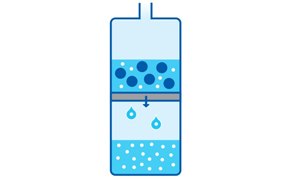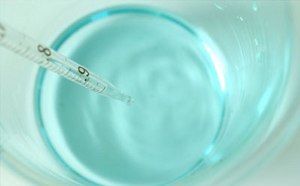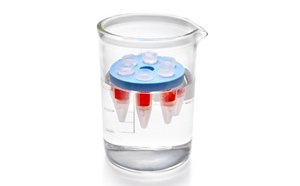Protein Concentration & Buffer Exchange

Protein concentration and buffer exchange are commonly used in protein and antibody purification, bioprocessing, and proteomic analysis workflows. Sample preparations of macromolecular solutions such as proteins, enzymes, antibodies, and viruses often yield large volumes of diluted proteins and other biomolecules in buffers that are incompatible with downstream processes or detection. Following sample extraction, dilute proteins often need to be concentrated and clarified prior to analysis or use.
Feature Categories
Centrifugal and pressurized ultrafiltration devices for protein concentration, desalting, buffer exchange, separation, and diafiltration of biological and environmental samples in preparation for downstream applications.
Learn about high-purity biological buffers in various formulations and packaging formats to get superior solution stability and pH control for your bioprocess workflow applications.
Dialyzers, centrifugal ultrafiltration devices, and stirred cells for buffer exchange...
Centrifugal and pressurized ultrafiltration devices for high recovery protein concentration...
Protein Concentration
Several methods exist for protein concentration, including filtration with porous membrane filters, dialysis in hyperosmotic solutions, and precipitation/salting out. Ultrafiltration provides a convenient method that utilizes semi-permeable membranes to concentrate proteins under pressure or centrifugal force with minimal denaturation, deactivation, and degradation of the proteins. Using this technique, excess fluid passes through the filter while target protein is retained, increasing the protein concentration by decreasing the sample volume.
Protein Enrichment
In protein enrichment, specific groups or types of proteins in a biological sample are concentrated for further analysis. Protein enrichment methods are used to isolate low-abundance proteins and reduce sample complexity. Enrichment separates and concentrates target proteins for improved downstream proteomic analysis. Ultrafiltration is often used in protein enrichment to separate classes of proteins based on molecular weight.
Buffer Exchange and Desalting
Purified proteins often need to be transferred to a suitable buffer for further analysis. Buffer exchange, desalting, and detergent removal can be accomplished using methods including:
- Dialysis: Small permeable molecules such as salts, detergents, solvents, and other impurities are removed based on their ability to pass through a membrane.
- Column chromatography: Salts are removed using gel filtration columns that rely on size exclusion for separation.
- Diafiltration: Salts, detergents, and other impurities are removed based on their molecular size using porous ultrafiltration membranes under pressure or centrifugal force.
Visit our document search for data sheets, certificates and technical documentation.
Related Articles
- Large-volume centrifugal filter devices are a convenient alternative to stirred cell ultrafiltration devices for purifying proteins from large volumes of solution.
- Desalting at laboratory scale is a well-proven, simple, and fast method that will rapidly remove low molecular weight contaminants at the same time as transferring the sample into the desired buffer in a single step.
- Amicon Stirred Cells concentrate and buffer-exchange macrosolutes efficiently with pressure-driven filtration.
- For filtering large volumes of biological solutions, we manufacture specialized equipment including centrifugal filtering devices, discs, cells and solvents.
- Explore ultrafiltration membrane principles and benefits for protein sample preparation, including solvent exchange and sample concentration.
- See All (8)
Related Protocols
- These tables will help you navigate the preparation of many common buffer solutions by pH and pKa. Choose a buffer with an effective pH range for your specific assay.
- This page shows how to perform sample desalting, buffer exchange and concentration for affinity chromatography of tagged proteins.
- User guide for Amicon® Stirred cells including features, operation, specifications, and troubleshooting.
- Detergents are frequently used to solubilize proteins and nucleic acids during purification, but the presence of detergents may interfere with downstream analyses.
- If an antibody must be purified from a small sample volume (0.5-10 mL), then the Amicon® Pro Purification System is recommended.
- See All (18)
Find More Articles and Protocols
How Can We Help
In case of any questions, please submit a customer support request
or talk to our customer service team:
Email custserv@sial.com
or call +1 (800) 244-1173
Additional Support
- Chromatogram Search
Use the Chromatogram Search to identify unknown compounds in your sample.
- Calculators & Apps
Web Toolbox - science research tools and resources for analytical chemistry, life science, chemical synthesis and materials science.
- Customer Support Request
Customer support including help with orders, products, accounts, and website technical issues.
- FAQ
Explore our Frequently Asked Questions for answers to commonly asked questions about our products and services.
To continue reading please sign in or create an account.
Don't Have An Account?

